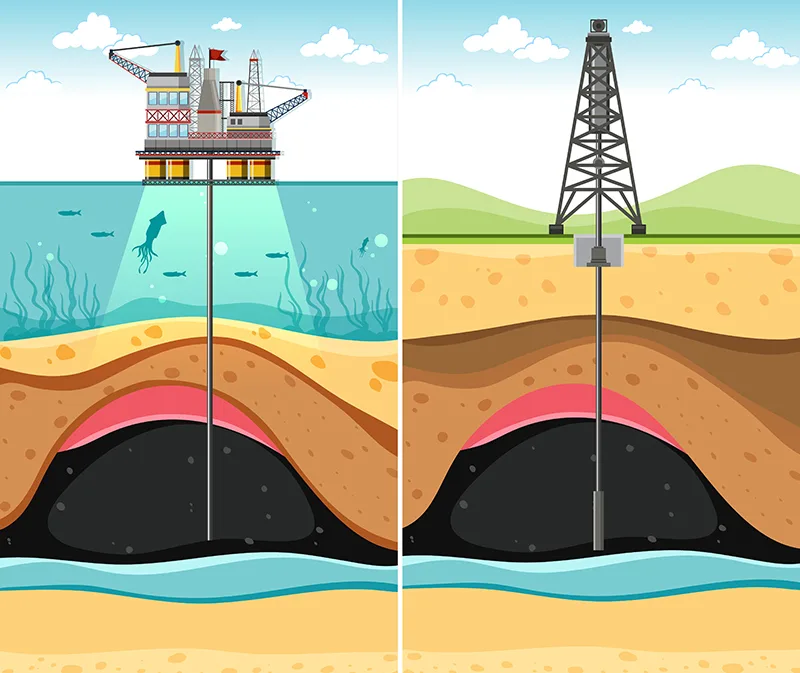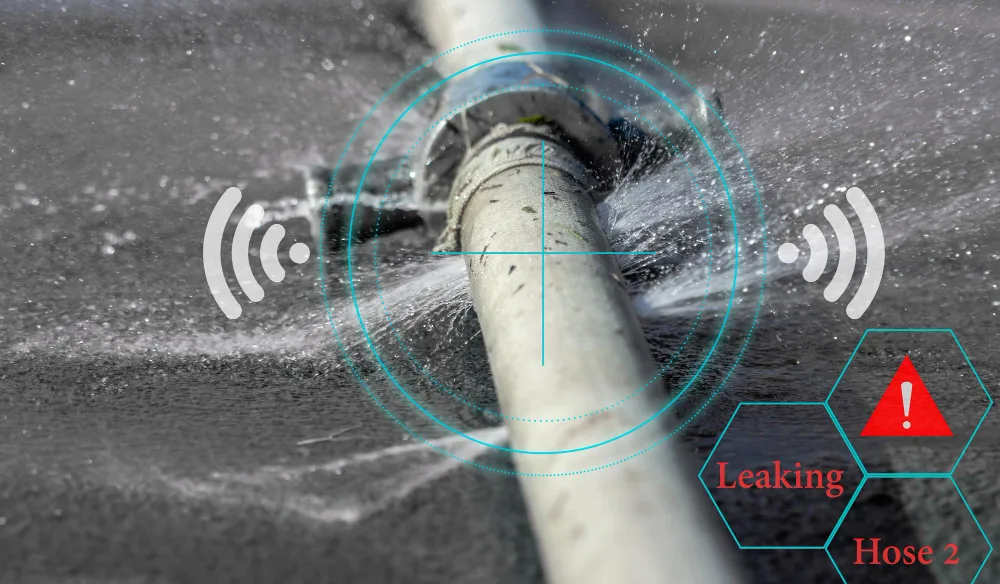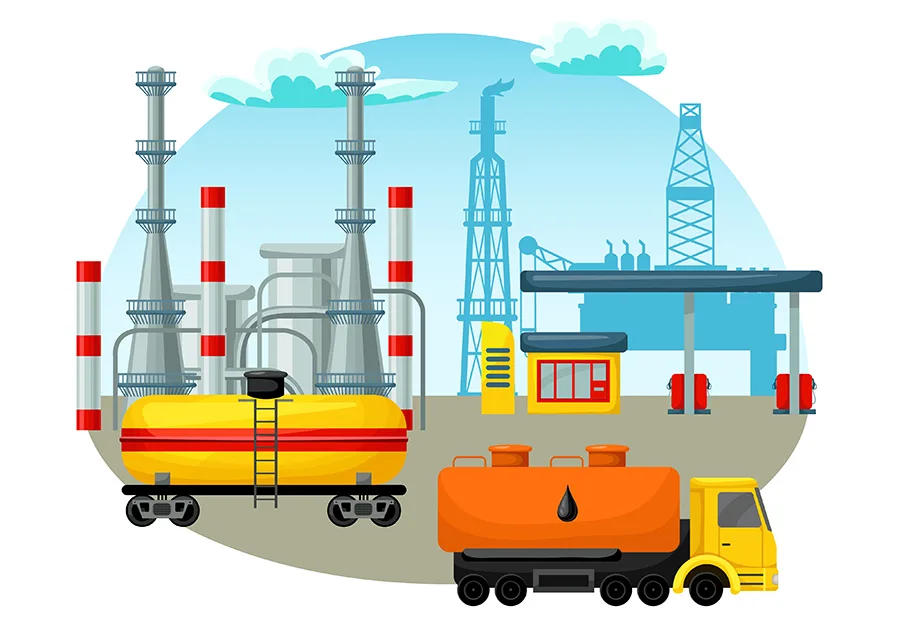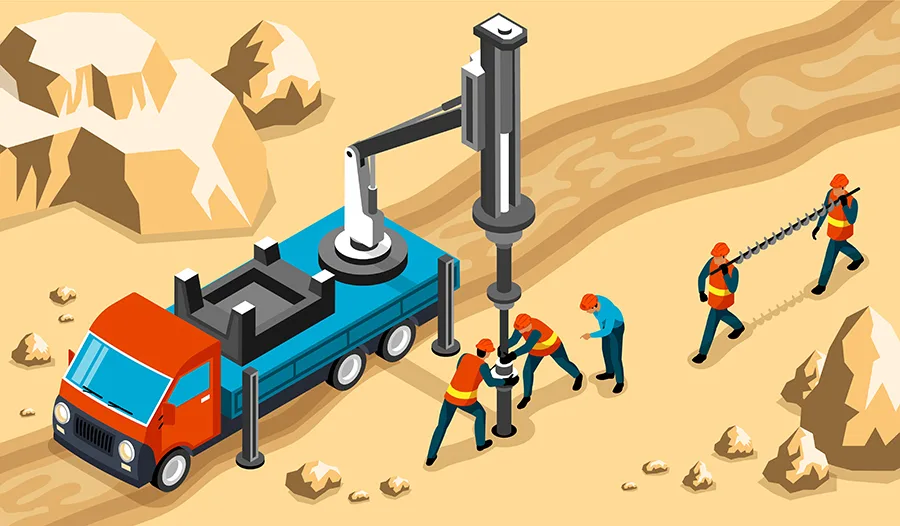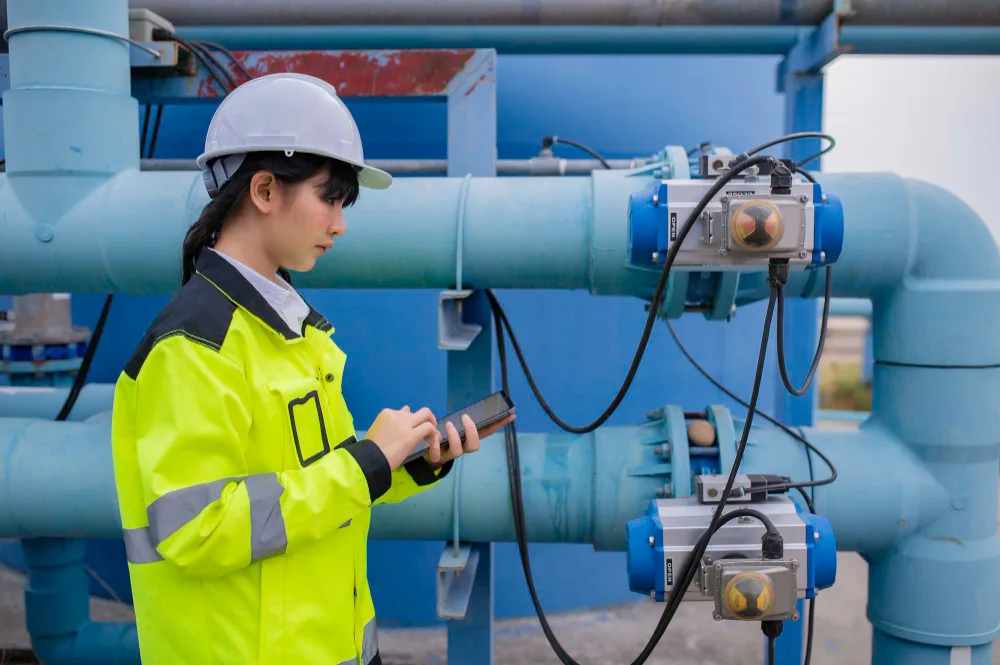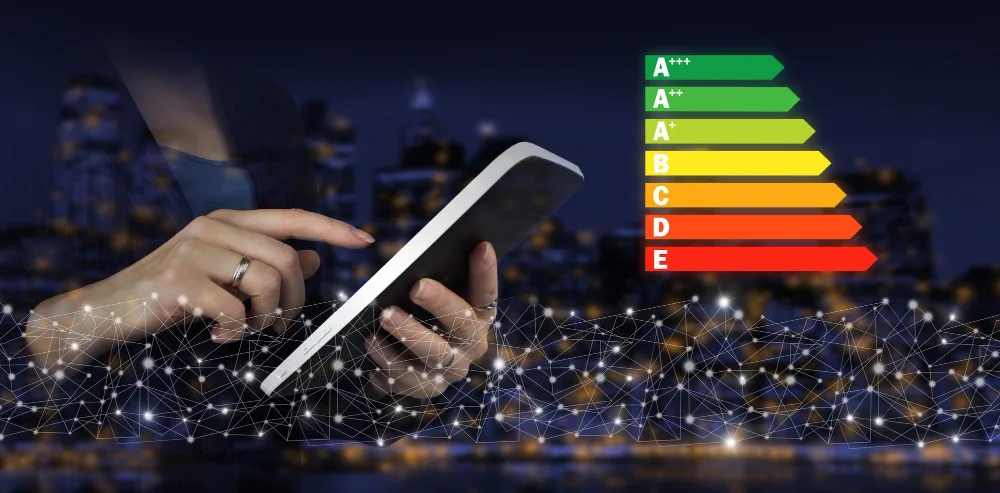Upstream — Preventive Maintenance of The Offshore Oil and Gas Assets
In the realm of IoT devices in the Oil and Gas industry, a large oil and gas company might oversee over 50,000 wells along with various types of equipment for each well, small and big. In the event of equipment failure, a domino effect of problems will be created that will affect various sectors of the operations, just as ripples from water do. Only one machine out of function may lead to decreased production speed or even noncompliance with regulations.
The largest problem associated with this field is maintaining highly intricate and costly machinery. Gas and oil prospecting is done with the use of large machines and modern technologies. With the utilization of IoT devices in the upstream oil and gas sector, companies can supervise equivalent the most complex engineering setups remotely. It helps prevent breakdowns, manage schedules, and receive automatic alerts in case of any problem.
Luckily, IoT technologies in the Oil and Gas industry are playing a crucial role in protecting valuable assets in the field. The oil and gas extraction process provides an example of how IoT devices reshape Oil and Gas companies. The areas where oil and gas are produced comprise many expensive and complex equipment. Previously, such equipment was covered only by sporadic site-based inspections of poor quality. Due to the large and complex nature of the equipment, small technical malfunctions decrease the efficiency and lead to great losses.
Currently, it is possible to establish an inexpensive IoT device that would watch over a device remotely, monitor when it requires maintenance and prevent it from failing. When a machine begins to misbehave or malfunction, the IoT device will instantly fire an automatic alert. It reduces the cost of things not working efficiently and big breakdowns and equipment breaking down. This implies that IoT devices in the Oil and Gas industry revolutionize the maintenance of equipment. We do not have to wait for something to go wrong but we can be prepared for it and prevent it from escalating.
Nonetheless, upstream activities companies are used to this problem of too much data coming from too many places. They continuously get data from many sensors and numerous tools of different oilfield service companies that participate in drilling and other activities. McKinsey study also found that less than 1% of all that data is used for decision making. However, the target shouldn’t be just to raise this percentage. What is of greater importance is the determination of the appropriate data to be considered and utilized. This issue is more critical than just considering the quantity of data, and the AI and machine learning have an important role in solving it.
Midstream — Environmental Monitoring and Regulatory Compliance
For midstream operators, IoT devices in the Oil and Gas industry reshape oil and gas companies by enhancing the monitoring of pipelines and tanks, leading to significant savings and leak prevention, especially for large pipelines.
IoT sensors may also be utilized by oil and gas companies to monitor the environment and ensure that they are in compliance with the regulations regarding how much waste and pollution they can create. Previously, the field agent of an oil and gas field had to personally visit an extraction or processing site for regulatory compliance verification. But now, an IoT device can be placed there to keep an eye on them from a distance. It can monitor all essential items to ensure that everything is behaving according to the standards, for example, temperature changes, moisture, settling tanks and distribution pump stations, leaks of oil and gas emissions.
This function not only reduces the costs associated with monitoring sites, but it is also has a much faster response. Though a visitor might only come to the site every few months, an IoT device will provide real-time and continuous information immediately. This response-ability also limits the degree of penalties when non-compliance happens. In instances of leaks or pollution, regulatory penalties are frequently a function of the quantity of materials released. Thus, IoT devices in the Oil and Gas industry can assist companies in preventing large fines by enabling them to address leaks before they escalate into a trouble.
Downstream —Empowering Distributors Through Real-time Supply Chain Information
By 2023, almost five million Americans are still using home heating oil (HHO) to heat their homes. This oil is normally kept in big tanks and is refilled by licensed oil companies occasionally. To consumers, this checking the oil levels, placing the order and refilling process is not only ineffective but also quite complex.
The downstream oil and gas companies have challenges associated with cooling water, treating toxic waste, oily sludge recovery, and solvent management. IoT devices in the oil and gas industry allows the downstream companies to improve their energy utilization efficiency and change their operational ways.
In all industries, the efficiency of the application of analytics and AI to predict and prevent problems hinges on the quality of data used to develop the models and apply new algorithms. Nevertheless, most operators face the challenge of obtaining consistent flows of such accurate, well-organized data today.
IoT Applications in Upstream
The oil and gas sector has rapidly recognized the revolutionary potential of IoT technology in exploration and production processes. IoT devices like sensors are used by forward-looking companies only for collecting data, but now these companies are creating elaborate strategies how to make profit on the data collected. This approach leads to the creation of smarter business models that push their enterprises to new levels of performance.
Here are several ways IoT devices in the oil and gas industry are utilized in various aspects of the upstream companies:
Seismic Data Acquisition and Processing:
Seismic data acquisition and analysis is key operation in the oil and gas sector as it gives vital information about the subsurface structures and possible existence of hydrocarbon reservoirs which all companies want to discover.
- Enhanced Exploration Efficiency: IoT devices can be used for surveying, linked up by fiber optic cables to map underground drilling locations to find the best sites for high production. When the sensors are online, they send the readings to a server which draws a picture of the potential site.
- Accurate Reservoir Modeling: The use of advanced analytics with information coming from IoT sources enables to build complex and accurate reservoir models that help in improving the decision-making during drilling and extraction operations.
- Machine Learning in Geoscience for Oil and Gas Exploration: Modern machine learning algorithms are widely applied in geoscience modeling to aid the geoscientists in calculating the hydrocarbon volume under the earth’s surface. This method saves time in the process of site selection increasing productivity of either new or existing drill rig.
- Automation in Exploration Data: Automation is one of the digitization aspects of the O&G industry. For instance, in oil and gas exploration, automatic data acquisition and transmission of the data to the processing unit have increased the efficiency of the exploration operation. In addition, instantaneous data collection and on-site processing through edge computing technology have increased the production rate and saved an excessive time for the production start.
Drilling Optimization
Drilling is a big part of oil and gas production costs and it makes up 20-30% of all costs. The utilization of IoT devices in the oil and gas industry improves operational efficiency by adjusting water, chemicals, and sand utilization.
- Oil Drilling Management: Drilling is one of the most important aspects of oil and gas operations. The Internet of Things (IoT) comes with some important improvements in the drilling efficiency. Deep drilling rig creates dangerous situation. Proper measurements are the key to the successful drilling. Drilling in deep-waters is associated with risks and possible disasters. IoT devices in the oil and gas industry become important to mitigate the risks and ensure the smooth operations. Smart devices through the use of data received from sensors forewarns specific personnel about any drilling errors well in time.
- Smart Optimization: Studies have shown that advanced analytics could cut operation time by 50%. In the same way, semi-automated field operations also reduce employee hazards and onboarding costs.
- Real-time Monitoring of Drilling Parameters: IoT devices allow the monitoring of drilling factors such as pressure, temperature, and equipment performance. This facilitates the quick modifications for improved drilling efficiency. Drilling success depends on careful monitoring of various drilling operations. Whenever any abnormal changes in the drilling conditions happen, it may lead to such problems as bit balling or a broken drill bit. Through the use of digital drilling records, such issues can be foreseen. Machine learning models that work with this digital drilling data can predict the rate of penetration (how fast the drill advances) and adjust the weight on the drill bit in real-time.
- Predicting Drilling Fluid Density: Using the acquired data, the drilling teams can monitor meticulously the changes in the drilling fluid properties and adapt and modify the necessary parameters to retain the desired density.
- Intelligent Decisions to Mitigate Lost Circulation: Machine learning algorithms enable IoT devices to process the data to detect patterns and correlations among drilling conditions and lost circulation occurrences. This aids in development of predictive models for detection of potential lost circulation situations.
- Estimation of The Proper Pressure of The Drilling Fluid.
- Predictive Maintenance of Drilling Equipment: The data generated by IoT allows anticipatory maintenance, identification of possible equipment failures prior to them becoming worse, reducing downtime, and prolonging the life of drilling equipment.
Production Monitoring and Optimization
IoT technology has greatly improved the monitoring and control of production across different sectors, especially in its revolutionary applications in the oil and gas industry.
Some key areas where IoT devices in the oil and gas industry is making a profound impact include:
- Well-performance Analysis: The performance of the oil wells is monitored by the IoT sensors continuously, which sends alerts in case of any deviations and also points out opportunities for the improvement. This results in the increase of the productivity level of the production process.
- Automated Control of Production Processes: IoT applications are able to automate production process control, adjusting real time parameters to keep conditions optimal and output at maximum.
Pipeline Monitoring and Maintenance IoT Applications
IoT greatly improves pipeline monitoring and maintenance processes in the oil and gas industry, and provides safety, efficiency and sustainability.
Here are some essential oil and gas IoT use cases in Pipelines:
- Advanced Sensors for Real-time Monitoring: Iot-enabled sensors provide 24/7 monitoring of pipeline conditions and thus enable real-time detection of potential leaks and weak points.
- Early Warning Systems: IoT manifestations, early warning systems, send instant notifications on leaks or possible problems, ensuring quick response and minimum environmental damage.
- Leak Detection and Prevention: Leak detection and prevention are two of the most important issues concerning the oil and gas industry, as the potential outcome can be a safety hazard, an environmental disaster or a regulatory fine. IoT devices in the Oil and Gas industry have become a very effective means to solve these problems.
A major example of IoT devices in the oil and gas industry is the application of technology in pipeline monitoring and leak detection by Chevron. One of the biggest oil companies in the U.S., Chevron, uses IoT sensors along its pipeline network to monitor pressure, flow rate, and temperature on a continuous basis. This data is analyzed in real-time and they get to notice any form of abnormalities or potential leakages promptly. This knowledge enables them to act promptly in reducing risks, avoiding damage, and protecting the safety of their pipelines.
Pipeline Integrity Management
This is a crucial part of the oil and gas sector as it ensures the safe and effective transference of hydrocarbons over long distances.
The adoption of IoT technology has opened new avenues for enhancing pipeline integrity through:
- Corrosion Monitoring: Continuous monitoring by IoT devices helps to detect the level of pipeline corrosion and therefore, identify areas that need to be addressed, in turn, minimizing the risk of pipeline failure.
- Predictive Maintenance for Pipeline Infrastructure: The data generated by IoT enables predictive maintenance of pipelines by detecting potential problems before they become large, reducing downtime, and prolonging the life of the infrastructure.
- The Data Provided by IoT: sensors is critical in the improvement of future engineering and construction methodologies. It aids in maximizing the life of pipelines by facilitating the analysis and understanding of the way pipelines function under different external conditions such as structural pressures, fluctuating weather, soil types, moisture levels, and pH levels. In addition, this sensor data confirms the dependability of the old pipelines that have been operating for decades, guaranteeing their safety.Abnormal sound waves are detected by ultrasonic and acoustic sensors, which in turn indicate the possibility of cracks or delamination in pipelines. Magnetic sensors are also used for detecting wall thickness changes of the pipeline due to corrosion.
Energy Consumption Optimization
The integration of IoT devices in the oil and gas industry have created new opportunities to streamline energy usage, enabling companies to monitor, analyze, and optimize their consumption patterns by:
- IoT-enabled Smart Pumping Systems: Pumping systems are to be optimized with the help of IoT applications to operate at their peak level, minimizing energy consumption and thus operation costs.
- Integration with Renewable Energy Sources: The IoT technology enables the integration of renewable sources like solar panels and wind turbines into oil and gas operations. Monitoring and controlling these other sources of energy leads to optimization of the energy mix by the companies to reduce their dependence on the traditional fossil fuels.
- Energy Management Through Data Analytics: The IoT devices and advanced data analysis work together to collect, evaluate, and act on the energy consumption data. This enables industrial IoT oil and gas companies to increase their energy efficiency, reduce wastage, and minimize their environmental footprint.
